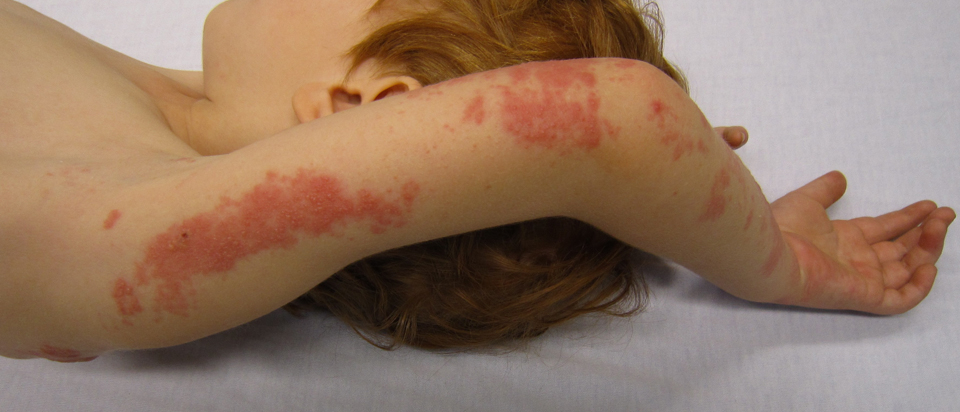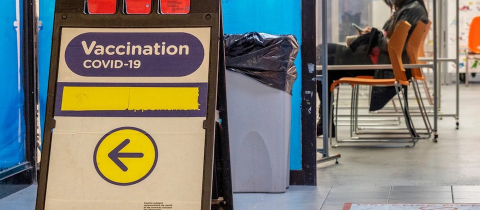It’s important to understand what shingles is. Shingles is essentially a reactivation of chickenpox. Chickenpox is a bit of a misnomer. The “pox” ending refers to its blistering rash. For much of human history it was thought to be similar to smallpox (another illness with a blistering rash). However, the two infections are entirely unrelated.
Why it was called “chicken”-pox is not entirely clear since the disease has nothing to do with chickens. A few theories have been put forward. One is that “chicken-pox” is a linguistic corruption of “child-pox” since the disease generally affects children. But the real reason is likely lost to history. In any case, we are better off referring to chickenpox by its scientific name of varicella.
Varicella is caused by the aptly named Varicella-zoster virus (VZV). Varicella is not a benign illness and it can be fatal, but most people survive the initial infection. However, even though the characteristic rash eventually disappears, the virus is never entirely cleared from the human body. It remains dormant in the dorsal root ganglia, a cluster of nerve cells that run parallel to the spine. Your immune system normally keeps the virus in check. But as we age, immunity can wane. By age 55, 30-40% of people have lost the specific immunity they had to the varicella-zoster virus and the virus can re-awaken.
This second VZV infection is not like the first. Where as varicella (chickenpox) is a diffuse rash that spreads across the body, this second infection has a more limited spread. When the virus escapes from the dorsal root ganglion along the spine, it follows the path of a single nerve group. Starting from the back it arcs around the thorax toward the front on only one side of the body. This belt like distribution gives the disease its name, shingles. It is sometimes stated that shingles rash looked like the shingles of a roof to the befuddled mind of some ancient physician, hence the name. In actuality, the word “shingles” likely derives from the Latin “cingulus,” meaning girdle, which describes the belt like distribution of the rash, which wraps around the body. Officially the medical term for shingles is zoster, which derives from the Greek word for belt. It is often hyphenated to herpes-zoster to reflect that the virus VZV is part of the herpes family of viruses. It is also sometimes referred to as zona, particularly in French, which is ancient Greek variant of the word for belt. The same disease can be known by different names is one of the more confusing aspects of medicine.
Zoster is not generally a fatal condition. However, if it spreads along a nerve leading to the eye it can cause blindness in that eye. Its main medical symptom though is pain. The pain associated with herpes-zoster can be intense and debilitating. While the pain usually subsides after 3-4 weeks, in some people it can turn into a chronic pain syndrome called post-herpetic neuralgia, which you should not wish on your worst enemy.
The best way to avoid getting herpes-zoster (shingles) is to never get varicella (chickenpox) in the first place. For anyone over the age of 40, this is a practical impossibility. Varicella infection was so common that over 99% of the population shows signs of a prior infection even if they never remember having chickenpox as a child. With the development of the varicella vaccine, this has changed somewhat. Even people who were vaccinated against varicella as a child have a risk of developing herpes-zoster because traces of the virus remain in the system after vaccination. However, the risk is much lower than people who were infected by the actual varicella-zoster virus.
Since the virus is present in most people of a certain age, the best solution for preventing zoster eruptions to boost the immune system to keep the virus dormant. This is accomplished, of course, with vaccination. Up until recently, the zoster vaccine on the market was called Zostavax. It was a live attenuated vaccine, meaning that it contains a live virus that has been modified to make it weaker, less able to cause an infection, and easier for your immune to kill. The Zostavax vaccine was overall very effective. It cut rates of herpes zoster in half from 3.3% to 1.6%, meaning that for every 60 people vaccinated you prevented one case of zoster. Its main drawback though was that its effectiveness seemed to fade with time and as people aged. Research showed it was less effective in people over the age or 70. The other limitation was that it could not be used in people with a compromised immune system, for example due to cancer and chemotherapy.
Now a new vaccine for herpes zoster, called Shingrix, has been approved. Unlike Zostavax it is an inactivated recombinant vaccine. Inactivated vaccines are different than live attenuated vaccines in that they contain killed virus. In fact Shingrix only contains part of the varicella-zoster virus, which means that unlike the previous vaccine it can be used in people with a compromised immune system. It also seems to be effective in people over 70 years old. Its efficacy is also measurably better than its predecessor. It reduced rates of herpes zoster from 9.1 to 0.3 cases per 1000 people. This means that for every 38 people vaccinated, you prevent one episode of zoster, which is an improvement from before.
The new vaccine has a few downsides. It requires two doses spread 2-6 months apart, instead of a single dose. Side effects were more common, but these were mostly mild side effects and generally subsided. Since the older Zostavax vaccine loses its effectiveness over time and seems to be less effective in people over the age of 70, its recommended that people who got the Zostavax get re-vaccinated with the new Shingrix vaccine. Also, because shingles can strike twice, albeit rarely, those who have had a previous episode should also consider getting vaccinated.
Unfortunately, the vaccine is not covered by the public health care system, though hopefully it will be soon. Until then, the decision to pay for it out of pocket is an individual one. However, when making the decision, remember that the new vaccine is objectively more effective and shingles, though not fatal, is possibly one of the most painful conditions you will experience. Given that one out of every three people gets shingles at some point in their lives, getting the new vaccine is something worth thinking about.
Want to engage with this content? Comment on this article on our Facebook Page!







